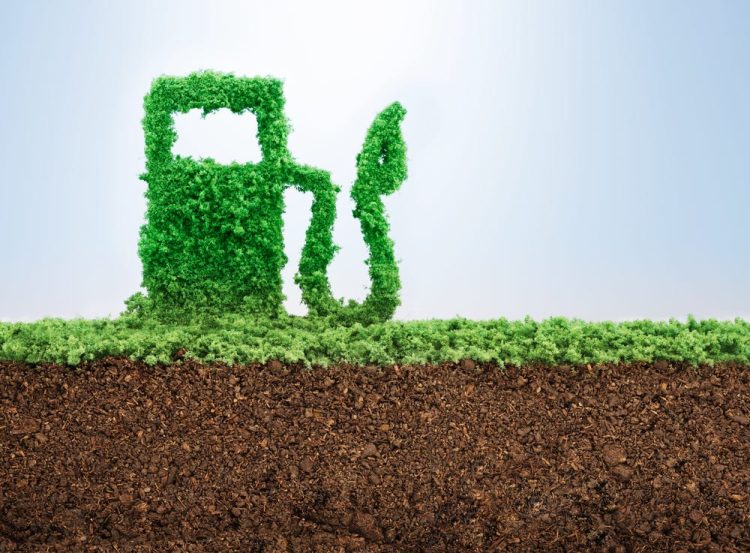The Evolution of Fueling Stations: Navigating the Future of Energy

Fueling stations have been an integral part of our modern infrastructure, catering to the ever-growing demand for energy to power our vehicles and machinery. As we stand on the cusp of a transformative era in energy, fueled by technological advancements and a growing awareness of environmental concerns, the traditional fueling station is undergoing a significant evolution. This article explores the past, present, and future of fueling stations, examining how they have adapted to changing needs and what lies ahead in this dynamic landscape.
Historical Perspective:
The concept of fueling stations dates back to the early 20th century when automobiles started replacing horse-drawn carriages. Gasoline became the primary fuel for internal combustion engines, giving rise to the first generation of fueling stations. These were basic structures with fuel pumps, offering a convenient stop for motorists to refuel their vehicles.
Over the decades, fueling stations evolved to accommodate new fuel types, such as diesel and compressed natural gas (CNG). The layout of these stations also changed, incorporating additional services like convenience stores, car washes, and repair facilities. The rise of electric vehicles (EVs) introduced a new dimension to the fueling station landscape, prompting the development of charging infrastructure.
The Present Landscape:
In the present day, fueling stations have become multifaceted service centers, adapting to the diverse needs of consumers and the changing energy landscape. Traditional gas stations offer a variety of fuels, including unleaded gasoline, diesel, and alternative fuels like ethanol and biodiesel. However, electric vehicle charging stations are becoming increasingly prevalent, catering to the growing market of EV owners.
The modern fueling station is not just about refueling vehicles; it has evolved into a hub for various services. Convenience stores, often attached to fueling stations, provide motorists with a one-stop-shop experience, offering snacks, beverages, and other essentials. Additionally, many stations now feature car wash facilities, providing a comprehensive range of services for vehicle maintenance.
Environmental Concerns and Sustainable Solutions:
The environmental impact of traditional fueling stations has been a subject of growing concern. The combustion of fossil fuels contributes to air pollution and greenhouse gas emissions, prompting a shift towards more sustainable alternatives. In response to this, some fueling stations are incorporating eco-friendly practices, such as installing solar panels to generate clean energy and implementing recycling programs.
The emergence of biofuels and hydrogen as alternative fuels is also influencing the landscape of fueling stations. Biofuels, derived from renewable sources like plant matter, offer a more sustainable option compared to conventional fossil fuels. Hydrogen fueling stations are gaining traction, supporting the development of fuel cell vehicles that produce zero emissions.
Electric Vehicle Charging Stations:
One of the most notable changes in recent years has been the widespread adoption of electric vehicles, leading to the establishment of electric vehicle charging infrastructure. Charging stations range from slow chargers suitable for overnight charging at home to fast chargers at public stations, allowing for quick top-ups during a journey.
The growth of electric vehicle charging networks has become a focal point in the evolution of fueling stations. Major players in the automotive and energy industries are investing heavily in expanding charging infrastructure to address range anxiety concerns and accelerate the adoption of electric vehicles.
The Future of Fueling Stations:
Looking ahead, the future of fueling stations is poised for groundbreaking changes driven by technological innovation and environmental imperatives. The transition to electric and alternative fuel vehicles will continue to shape the landscape, with an increasing focus on sustainable practices and renewable energy sources.
One notable trend is the integration of smart technologies into fueling stations. Automated payment systems, predictive maintenance using artificial intelligence, and real-time data analytics are becoming essential components of modern fueling stations. These advancements not only enhance the customer experience but also contribute to more efficient and environmentally friendly operations.
The concept of the “energy station” is gaining traction as a holistic approach to catering to various energy needs. These stations may offer a combination of traditional fuels, electric vehicle charging, and alternative fuels like hydrogen. By diversifying their energy offerings, fueling stations can adapt to the evolving market and cater to a broader range of vehicles with varying energy requirements.
The Role of Government and Industry Collaboration:
The transformation of fueling stations requires collaboration between governments, industry stakeholders, and technology innovators. Governments play a crucial role in setting policies and regulations that promote the development of sustainable and efficient fueling infrastructure. Financial incentives for the deployment of electric vehicle charging stations and the production of alternative fuels can accelerate this transition.
Industry collaboration is equally vital, with automakers, energy companies, and technology providers working together to create a seamless and integrated network of fueling stations. Standardization of charging protocols, interoperability between different charging networks, and the development of advanced technologies will contribute to the success of the next generation of fueling stations.
Conclusion:
Fueling stations are undergoing a remarkable evolution, driven by technological advancements, environmental concerns, and the changing landscape of transportation. From the humble beginnings of gasoline pumps to the sophisticated energy stations of the future, these hubs continue to adapt to the needs of a dynamic society.
As we navigate the future of energy, the emphasis on sustainability, innovation, and collaboration will define the success of fueling stations. The integration of electric vehicle charging infrastructure, alternative fuels, and smart technologies will shape the next chapter in the evolution of these essential energy hubs, ensuring a cleaner and more efficient future for transportation.
-
What is a fueling station?
A fueling station is a facility where vehicles can refuel or recharge their energy sources, such as gasoline, diesel, electricity, or alternative fuels like natural gas or hydrogen.
-
What types of fuel are typically available at fueling stations?
Traditional fueling stations offer gasoline and diesel. However, with the rise of alternative fuels, you may also find stations providing compressed natural gas (CNG), liquefied natural gas (LNG), ethanol, biodiesel, and electric vehicle charging.
-
How have fueling stations evolved over time?
Fueling stations have evolved from basic gasoline pumps to multifaceted service centers. They now often include convenience stores, car wash facilities, and, more recently, electric vehicle charging stations to cater to a diverse range of consumer needs.
-
What is the role of electric vehicle charging stations at fueling stations?
Electric vehicle charging stations are an essential component of modern fueling stations, addressing the growing demand for electric vehicles. They offer various charging options, including slow chargers for overnight use and fast chargers for quick top-ups during travel.
-
How are fueling stations adapting to environmental concerns?
Some fueling stations are adopting eco-friendly practices, such as incorporating solar panels, implementing recycling programs, and offering alternative fuels like biofuels and hydrogen, aiming to reduce the environmental impact of conventional fuels.
-
What are smart technologies in fueling stations?
Smart technologies include automated payment systems, real-time data analytics, and predictive maintenance using artificial intelligence. These innovations enhance customer experience, improve operational efficiency, and contribute to environmentally friendly practices.
-
How do governments support the development of fueling stations?
Governments play a crucial role in shaping policies and regulations to promote sustainable fueling infrastructure. Financial incentives, subsidies, and regulations supporting the deployment of electric vehicle charging stations are examples of government initiatives.
-
What is the future of fueling stations?
The future of fueling stations involves a transition to more sustainable practices, increased adoption of electric and alternative fuel vehicles, and the integration of smart technologies. Energy stations, offering a combination of traditional and alternative fuels, are expected to become more prevalent.
-
How do fueling stations contribute to the transportation sector’s sustainability?
Fueling stations contribute to sustainability by offering alternative fuels with lower environmental impacts, providing electric vehicle charging infrastructure, and incorporating eco-friendly practices into their operations.
-
Are there international standards for fueling stations?
Standardization is crucial for the seamless operation of fueling stations. International organizations and industry stakeholders work towards establishing common standards for charging protocols, interoperability between different networks, and safety standards for various types of fuels.
-
How do fueling stations impact local economies?
Fueling stations contribute to local economies by providing jobs, supporting nearby businesses (such as convenience stores and car washes), and attracting travelers who spend money in the local area.
-
Can I charge my electric vehicle at any charging station?
While many charging stations are compatible with a variety of electric vehicles, it’s essential to check the station’s compatibility with your vehicle’s charging specifications. Standardization efforts are underway to improve interoperability between different charging networks.
These FAQs provide an overview of fueling stations, addressing aspects of their history, evolution, environmental impact, and the role they play in the future of transportation.





